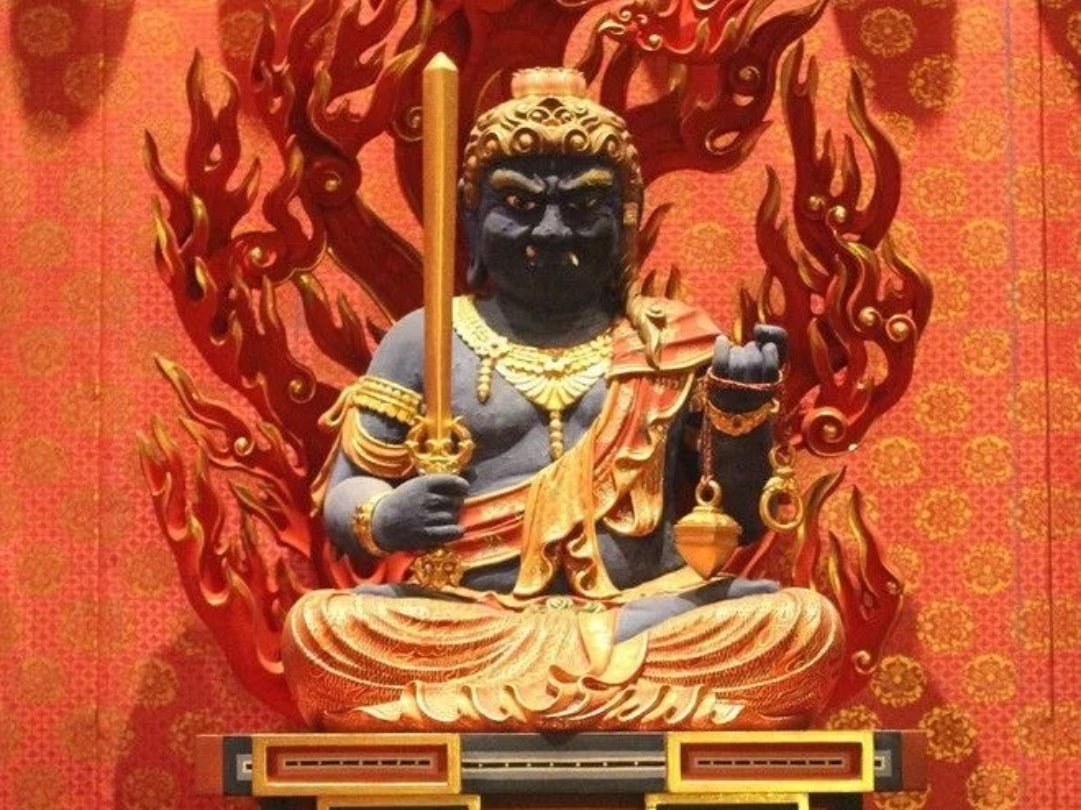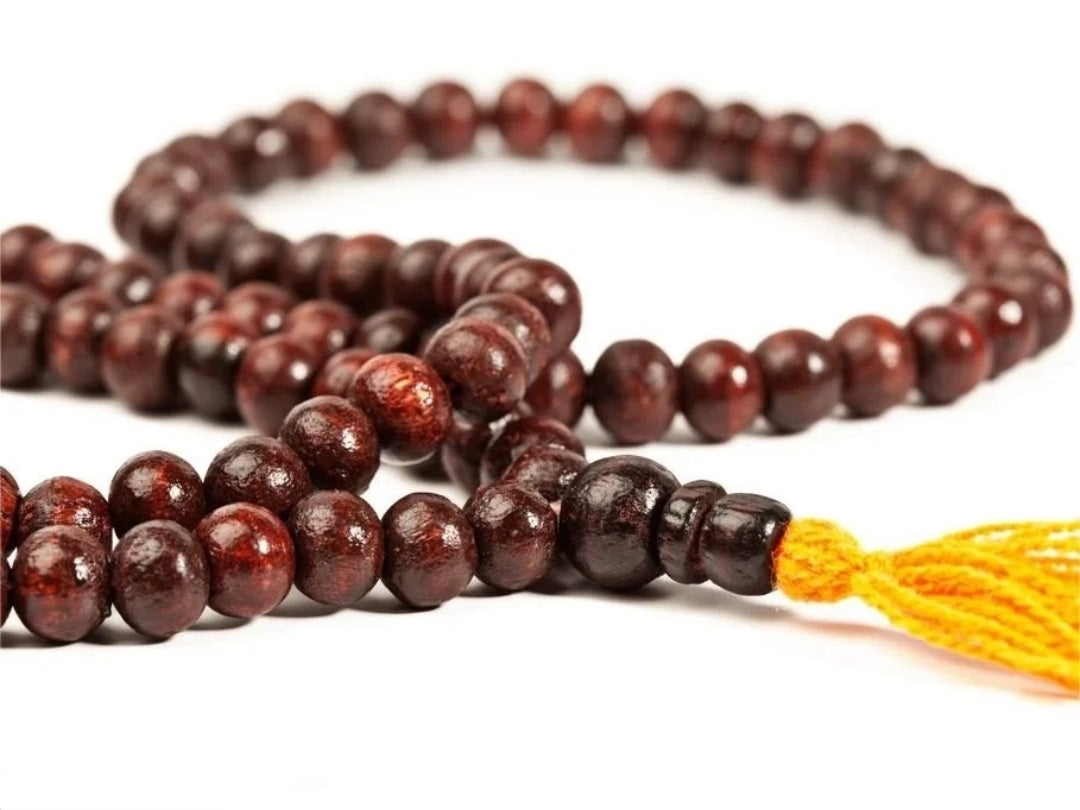In Mahāyāna and Tibetan devotional life, Mahasthamaprapta occupies a quiet, steady place beside Amitabha and Avalokiteshvara. Often translated as “Great Strength” or “Power of Attainment,” Mahasthamaprapta represents the inner force that sustains clarity, steadiness, and the power to realize awakening. This article explores who Mahasthamaprapta is, how artists translate his presence into wearable forms, and simple daily practices you can pair with a Mahasthamaprapta bodhisattva pendant to support resilience and focus.

Who is Mahasthamaprapta?
Mahasthamaprapta is traditionally part of the “Western Trinity” of Pure Land iconography: Amitabha Buddha (center), Avalokiteshvara (compassion), and Mahasthamaprapta (power/strength). Where Avalokiteshvara embodies boundless compassion, Mahasthamaprapta embodies the sustaining power that carries insight into fruition—steady, luminous, and resolute.
In imagery, Mahasthamaprapta is often depicted politely attentive rather than dramatic—radiant, sometimes holding a lotus or a water vessel that symbolizes refreshment and clarity. In Tibetan and East Asian temples his presence signals a blend of spiritual vigor and peaceful steadiness: the kind of inner support that helps a person keep practicing when life becomes difficult.

Symbolism carried into jewelry
When artisans set out to create Mahasthamaprapta jewelry, they translate those qualities—steadfastness, luminous strength—into materials, motifs, and form. Common design elements include:
-
Lotus or water-vase motifs: small lotus petals or a tiny vase engraved into a pendant evoke purity and the healing, replenishing quality associated with Mahasthamaprapta.
-
Radiant halos or rays: a simple circular halo, or radiating lines around a central stone, suggests the bodhisattva’s light without overwhelming the piece.
-
Calm seated silhouette: some pendants use a restrained outline of the seated figure for immediate recognition at small scale.
-
Script or micro-mantra bands: discreet engravings on the inner rim of a ring or on the back of a pendant allow an intimate devotional element without visual loudness.
-
Material choices: silver and brass create a traditional, tactile feel; gemstones such as lapis, sapphire, or blue-green stones are used to cue clarity and steadiness.
Techniques matter too. Makers often rely on time-honored methods—lost-wax casting for three-dimensional amulets, hand engraving for small details, and careful enamel work when color is needed. The result is jewelry that functions as both art and tactile reminder.
Wearing a guardian bodhisattva pendant: practice ideas
A guardian bodhisattva pendant is most useful when it becomes a cue for practice rather than a mere ornament. Here are two short, approachable practices you can try with a Mahasthamaprapta pendant.
1) Two-minute steadiness check (morning or between tasks)
-
Hold the pendant lightly in your hand or rest it over your heart.
-
Take three slow, full breaths—inhale for four counts, exhale for six.
-
Silently name an intention: “May I be steady today,” or “May clarity hold.”
-
Open your eyes and carry the intention into the next activity.
This short practice reorients attention and uses the pendant as a physical anchor.
2) Five-minute visualization (evening)
-
Sit comfortably with the pendant visible or in hand.
-
Close your eyes and imagine a steady, cool light (blue-white or soft gold) resting in your chest.
-
With each inhalation, feel the light strengthen; with each exhalation, let tension fall away.
-
End by touching the pendant and dedicating the practice: “May this steadiness benefit me and others.”
These practices are intentionally simple—accessible for daily life and suitable for modern wearers who want a devotional habit without formal ritual training.
Pairing a pendant with daily devotion and care
-
Placement: Wear the pendant near your heart to keep its symbolic energy close, or place it on a small home altar or gawu box when you don’t wear it.
-
Dedication: When you first receive a pendant, take a moment for a quiet dedication—an inward vow or a short spoken wish of goodwill—that personalizes the object.
-
Regular attention: A daily two-minute check is more powerful than an occasional long ritual. Small habits build steady results.
-
Care: Keep silver and brass clean with a soft cloth; avoid strong chemicals. For hand-painted or enamel pieces, limit water exposure and store away from direct sunlight.
Choosing Mahasthamaprapta jewelry thoughtfully
If you’re looking for Mahasthamaprapta jewelry, prioritize craftsmanship and provenance. Pieces made by artisans who understand the iconography will respect the balance between symbol and style. Whether you select a compact amulet, a simple charm, or a finely worked pendant, let meaning guide the choice: does this object invite steadiness in your life?
A Mahasthamaprapta pendant needn’t be ceremonial to be meaningful. Worn with a small, steady practice, it can become a gentle partner for resilience—an approachable way to carry the bodhisattva’s quiet strength into daily life.




